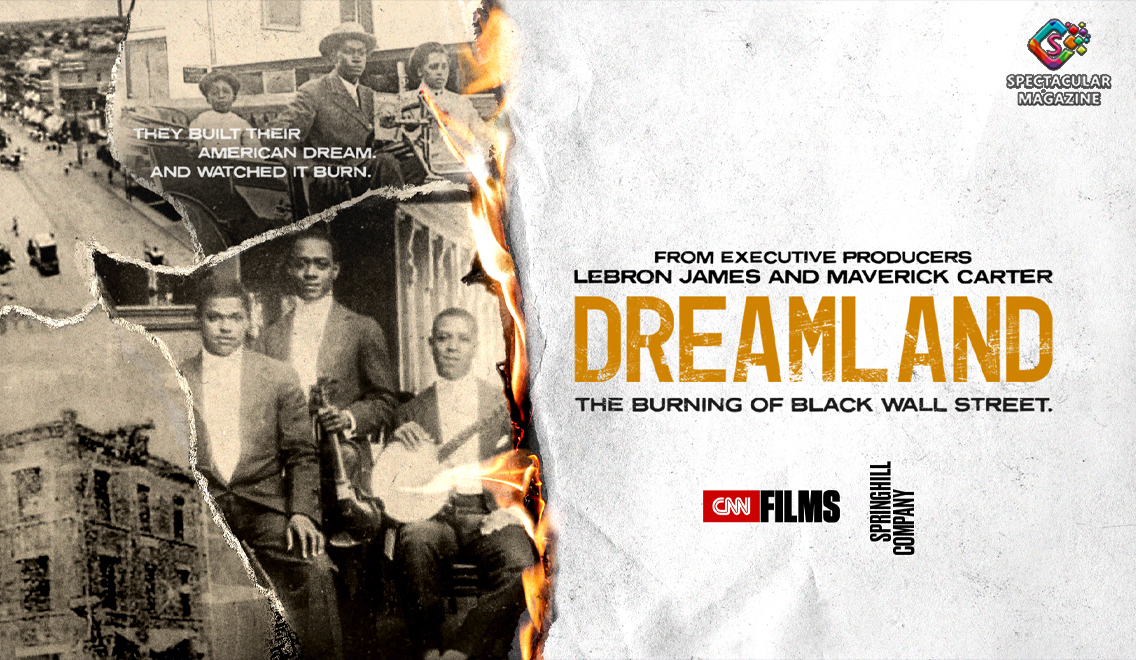Review: ‘Dreamland: The Burning Of Black Wall Street’ Is Much-Needed Film; A Must Watch

DURHAM, NC – CNN‘s documentary Dreamland: The Burning of Black Wall Street, executive produced by LeBron James, Maverick Carter, Jamal Henderson, and Philip Byron for The SpringHill Company, opens a door that questions American integrity. A buried history has finally unearthed itself. Premiering on CNN Monday (May 31) with an encore Saturday, June 5, Dreamland: The Burning of Black Wall Street explores the history of Black Wall Street and the violent events of late May and June 1921 in Tulsa, Oklahoma, that resulted in the slaughter of hundreds of the city’s African American residents.
On May 31, 1921, a white mob terrorized the Black community of Greenwood in Tulsa, Oklahoma, most often recognized by another name, Black Wall Street. Greenwood, a historic center of Black wealth, is the site of one of the nation’s most shocking mass murders. It is unimportant, the story of how the riot started. I could tell you that a shoe shiner was accused of trying to rape an elevator operator, but it does not matter.

According to the synopsis of the film: Accounts vary, but a 19-year-old African American man was arrested after being accused of assaulting a 17-year-old white woman inside Tulsa’s Drexel Building. After a white lynch mob was rebuked by African American World War I veterans, violent white vigilantes, some ‘deputized’ by local authorities, pursued and killed hundreds of Black men, women, and children in stunning acts of violence. Businesses were burned. Some marauders even flew airplanes to drop incendiary devices into Black residential areas. More than 35 city blocks were razed. Scores of Black residents needed shelter from the American Red Cross for weeks; many permanently fled the city.
This coalition of successful Black people was more than just an economical powerhouse; it was a promised land. It was our forty acres and a mule ten-fold.
Watching this documentary, I have realized that there are few stories where Black people in America win. We might have a childhood friend make it to the [major] league ever so often or a progressive politician, but it is rare. Tulsa’s Black Wall Street was an undisputed blowout win. These people had land, freedom, and opportunity even after being formerly enslaved.

It has become so rare that we consider a conviction of an officer killing an unarmed Black man a win. We have gone through so much that the mere acknowledgment of wrongdoing is a step forward. Directed and produced by Salima Koroma, the cinematic documentaryDreamland: The Burning of Black Wall Street celebrates the Black cultural renaissance that existed in the Greenwood district and investigates the 100-year-old race massacre that left an indelible, though hidden stain on American history.
The driving force behind the criminal attack was jealousy. Which is most often the root of hate. These thoroughbred Americans were upset that Black folks had the audacity to be affluent.
So, they burned down every business, 1,250 homes, killed 100-300 people and made the survivors clean the rubbish. Yet, this was not Black Wall Street’s destruction.
That opportunity happened to have come from “5 Civilized Tribes.” The native American Creek, Seminole, Cherokee, Choctaw, and Chickasaw tribes had aligned themselves with Confederates during the Civil War. They were slave owners.
Taking another’s freedom away is the only way to be seen as civilized in history’s eyes. Ironic.
“All of these four things were to be found in Nigger Town: booze, dope, bad niggers, and guns,” said the Tulsa Tribune.
Dreamland: The Burning of Black Wall Street uses fascinating photos to draw you in while educating you at the same time. The photos depict a lost way of life. The interviews with the descendants fill in the blanks. They speak of resilience and rebuilding the community. Koroma reaches back to explain how five Native American tribes were slave owners and their involvement with the massacre, which was a little surprising to me. Especially effective was her use of vibrant color when showing the vibrancy of the Greenwood community and black and white photos portray the dark side of the massacre. This film is much-needed and a must-see for all Americans to educate us of the United States’ ugly past so, as the saying goes, “we are not doomed to repeat it.” Dreamland: The Burning of Black Wall Street is a moving and powerful documentary. For these reasons, I give Dreamland: The Burning of Black Wall Street 5/5 stars. 
Can’t wait until Saturday? Watch Dreamland: The Burning of Black Wall Street on-demand anytime. Click here. You’ll see why it was the #1 in cable news in total viewers, adults 25-54, and among younger viewers (18-34), according to Nielsen Fast National data.

